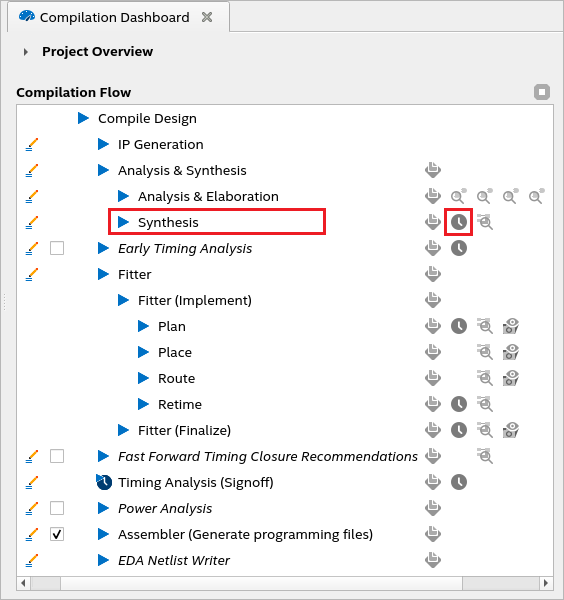Visible to Intel only — GUID: yga1656430039314
Ixiasoft
Visible to Intel only — GUID: yga1656430039314
Ixiasoft
2.3.2. Early Timing Analysis After Design Synthesis (Beta)
Once you enable the DNI flow, the compilation dashboard updates, and you can now access the Timing Analyzer right after design synthesis, as shown in the following image:

Early Timing Analysis flow is a combination of Synopsys* Design Constraint (SDC) on RTL and post-synthesis static timing analysis. However, you can run the flow even without RTL SDCs where you can view the synthesized timing netlist. For more information, refer to Synopsys* Design Constraint (SDC) on RTL and Post-Synthesis Static Timing Analysis (STA).
Early Timing Analysis flow involves running Analysis & Elaboration and Synthesis stages and iterating on your design's static timing analysis results early in the Intel® Quartus® Prime software compilation flow without running the Fitter. For additional information about each of the compilation stages listed in the Early Timing Analysis Flow diagram, refer to the following topics: